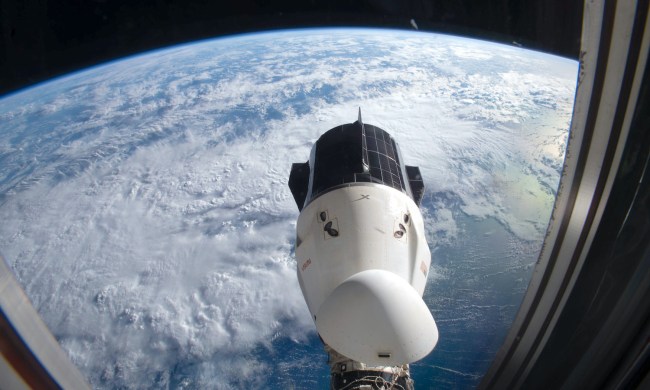Earlier this year, the European Space Agency (ESA)’s Juice spacecraft launched on its mission to investigate the icy moons of Jupiter. The launch went off smoothly, but there was a problem during the spacecraft deployment phase: an antenna was stuck and wasn’t deploying properly. After several weeks of work and various attempts at fixes, the Juice team succeeded in getting the antenna deployed, and now ESA has shared more information about the problem and how it was solved.
The antenna that failed to deploy was the Radar for Icy Moons Exploration (RIME) antenna, a 16-meter-long radar instrument that will be used to study the icy crusts of Jupiter’s moons like Ganymede, Europa, and Callisto. It was folded up on the side of the spacecraft for launch and should have deployed when it was unlatched once Juice was in space. On April 17, the team on the ground gave the command to activate an actuator which should have moved a pin to open a bracket and let sections of the antenna deploy into place.

But when the command was given, cameras on the spacecraft showed that the antenna didn’t budge. “You experience a state of disbelief,” said Juice team member Ronan Le Letty, Senior Mechanisms Engineer for ESA, in a statement. “The most unwanted situation is happening. We checked the picture two, three, four times. We tried again to activate the actuator, but nothing happened.”
There were several reasons that the pin could have failed to release. It could have been due to a buildup of ice, or it could be a simple mechanical issue of the pin being stuck. If there were ice on the pin, then it could be melted with heat from the sun — but it was located on the cold side of the spacecraft, which faces away from the sun. So the first fix attempt was to maneuver the spacecraft so its other side faced the sun, but only for short periods as this side wasn’t designed to withstand the sun’s heat and the team didn’t want to damage any other components.
To deal with a potentially stuck pin, the team performed just what you might do if something was stuck in place — they gave it a good jiggle. They used the spacecraft’s thrusters to rock it around very slightly, but that didn’t work to free the pin.
After several weeks of attempts and by working with engineering models on the ground, the team discovered that it could warm up the pin in the sun and then fire a nearby actuator to release the pin. The team rejigged the deployment order to make sure the different sections of the antenna wouldn’t collide but that actuators near to the jam could be fired and sent the command. Images from the camera showed that the stuck segments did deploy, and then the rest of the antenna deployed as planned.
The day of the fix was a stressful one, according to Le Letty: “It was a bit like the first day of the incident. There was a feeling of disbelief because four weeks of an enormous amount of pressure was just suddenly gone. I couldn’t quite believe it, despite seeing the pictures.”
With the deployment now complete, Juice could continue its journey to Jupiter.
“When RIME was eventually released I could almost see tears in the eyes of my colleagues,” said Giuseppe Sarri, ESA’s Juice Project Manager. “But we were positive from the beginning and the Champagne was already in the fridge …”



